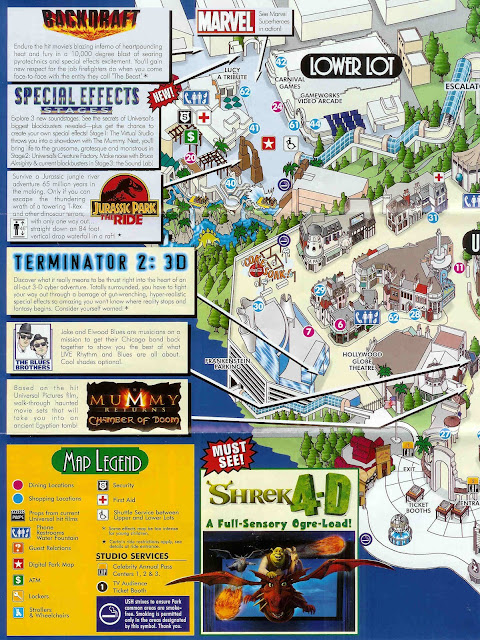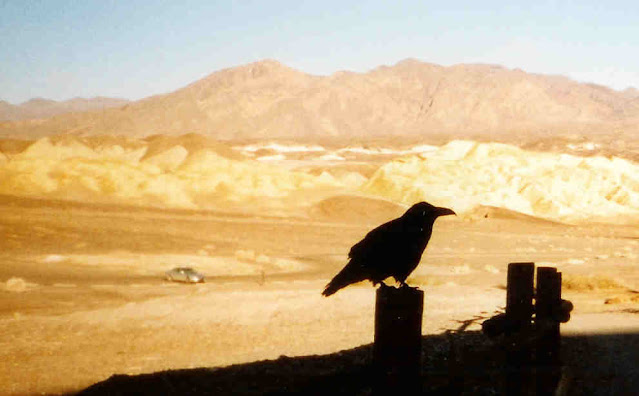November 2003
Los Angeles CA
Yeah, we've moved onto fully digital!
Hollywood and Vine
We then headed to Universal Studios.
Earthquake
Jaws
Flooding in Mexico
Bates Motel


Hunchback
Palm Springs
Oasis Unit 67B
We went away for a few days and came back to a damaged garage door, we explained (had hotel invoice) that we were away and had photos showing that our car was not damaged. End of story.
Bel Aire Golf (Tommy Jacob)
Cathedral City
Hollywood Heroes by George Montgomery.
College of the Desert Sunday Flea Market
The Dinosaurs near Cabazon factory outlets.
Downtown Palm Springs
Sonny Bono
El Paseo - Einstein


Living Desert
In 2003, the Living Desert Zoo and Gardens in Palm Desert, California opened the children's play area Gecko Gulch. The zoo also expanded its exhibits and educational facilities during the 2000s.
G-scale train first appeared at The Living Desert in 1998.
The train winds through models of everything from a throwback mining camp to the church at Old Mission Santa Barbara.
We took a side trip with an overnight stay in Death Valley.
On our way we stopped by the Salton Sea. Though saltier than the ocean, the Sea supports an abundance of fish that provide an important food source for millions of migratory birds on the Pacific Flyway. The modern-day Salton Sea was created when the entire Colorado River flowed unchecked into the Salton Sink for two years beginning in 1905.
Flows into the Salton Sea have declined in recent years, and the result is a shrinking, increasingly saline lake. As the Sea recedes, previously submerged lakebed is being exposed, creating dust that can be hazardous as it dries and becomes airborne.

Artist Drive is the most popular scenic drive in the park, this nine mile (14.5 km) paved road winds through multicolored, eroded hills
Badwater Basin is the lowest point in North America at 282 ft (86 m) below sea level. The salt flats here cover nearly 200 square miles (518 square km), and are composed mostly of sodium chloride (table salt), along with calcite, gypsum, and borax.
Stories suggest that Badwater Basin earned its name when a mule belonging to an early surveyor refused to drink from the spring-fed pool near the present-day boardwalk. However, the water here is not truly “bad,” just very salty.
The town was founded in 1897. In its heyday—from 1897 to 1905—Ballarat had 400 to 500 residents. It hosted seven saloons, three hotels, a Wells Fargo station, post office (that opened in 1897), school, a jail and morgue, but no churches. Ballarat was a place for miners and prospectors to resupply and relax.
Harmony Borax Works was the central feature in the opening of Death Valley and the subsequent popularity of the Furnace Creek area. The plant and associated townsite played an important role in Death Valley history.
After borax was found near Furnace Creek Ranch (then called Greenland) in 1881, William T. Coleman built the Harmony plant and began to process ore in late 1883 or early 1884. When in full operation, the Harmony Borax Works employed 40 men who produced three tons of borax daily. During the summer months, when the weather was so hot that processing water would not cool enough to permit the suspended borax to crystallize, Coleman moved his work force to the Amargosa Borax Plant near present day Tecopa, California.
Getting the finished product to market from the heart of Death Valley was a difficult task, and an efficient method had to be devised. The Harmony operation became famous through the use of large mule teams and double wagons which hauled borax the long overland route to Mojave. The romantic image of the “20-mule team” persists to this day and has become the symbol of the borax industry in this country.
.
The Harmony plant went out of operation in 1888, after only five years of production, when Coleman’s financial empire collapsed. Aquired by Francis Marion Smith, the works never resumed the boiling of cottonball borate ore, and in time became part of the borax reserves of the Pacific Coast Borax Company and it successors. On December 31, 1974, the site was placed on the National Register of Historic Places.
Natural Bridge is a stunning geologic formation tucked back in a Death Valley canyon.
Different from the smooth sandstone arches found in Utah, Natural Bridge is interesting because it is made of a jagged rocky alluvial deposit (rock, gravel, and sediment washed to the base of an ancient mountain and cemented together).
The bridge rises approximately 35 ft (11 m) above the canyon floor and is about 35 ft (11 m) thick.
A spectacular array of colors adorn the hills of Artists Palette. Tucked behind an unassuming yellow landscape, the rainbow of Artists Palette is the highlight.
Devils Golf Course received its name after a 1934 NPS Death Valley guidebook said, “only the devil could play golf” on this harsh terrain, and the name stuck. The salt pan we see today was once the site of Lake Manly, which is believed to have reached depths of over 600 feet at one time.
Where we stayed.
An elegant hideaway since 1927, the historic Inn at Death Valley has been a AAA-rated four-diamond resort for more than 37 years and still pampers every guest. Once the exclusive desert escape for such Hollywood elites as Marlon Brando, Clark Gable, and Carole Lombard.
Use the entrance tunnel from parking lot under the Furnace Creek Inn Death Valley California. leading to the elevators and hotel lobby.
View from our room - 2025 rates are $500 a night.
At 214 feet below sea level, this 18-hole, par 70 course is also the world’s lowest elevation golf course. Palm and tamarisk trees frame the fairways and majestic mountains are visible from all areas of the course.
Rated one of “America’s 50 Toughest Courses” by Golf Digest and a “Golfer’s Choice” for pace of play according to GolfNow, The Furnace Creek Golf Course at Death Valley offers golfers the chance to test their mettle against the low elevation, low barometric pressure, and perhaps even a coyote or two, that will make a golf ball dance in mysterious ways.
A coyote on the course.
Golden Canyon
The airspace over much of the upper Mojave Desert and southern Sierra Nevada is a special military-use "complex" known as R-2508. This complex stretches approximately 140 miles from north to south (Bishop to Edwards Air Force Base) and 100 miles east to west (the Nevada State Line to Tehachapi.) This airspace overlies vast areas of public land, including Death Valley National Park!
Training pilots having fun.
Sand dunes.
Scotty's Castle, Death Valley, California
Begun in 1922 the construction took place over several years and was never completed. The man who paid for it was a Chicago millionaire who hired local Shoshone Indians for the construction, along with skilled craftsmen, cabinetmakers, tile setters and iron-workers.
Ubehebe Crater is a large volcanic crater 600 feet deep and half a mile across. We often hear mistakenly that "Ubehebe" means "big basket," but the Paiute name Ubehebe was first applied to the 5,678 ft. Ubehebe Peak, 24 miles southwest of the crater. How the name Ubehebe became associated with the crater is not known. To the Timbisha Shoshone Indians, the crater has been known as "Tem-pin-tta- Wo’sah" has produced a great deal of confusion, but comparing the crater to a basket is appropriate.
How did these craters originate? They are known as Maar volcanoes, created by steam and gas explosions when hot magma rising up from the depths reached ground water. The intense heat flashed the water into steam which expanded until the pressure was released as a tremendous explosion. The western cluster of maar volcanoes was the first to form, then the southern cluster, followed by Ubehebe—the largest of them all—possibly as recently as 2,100 years ago.
The baobab tree is sometimes called the "upside down tree" because of its shape.






.jpg)



















































































































































I liked especially the second part! Reminded me of our travels through Australia´s Outback, oh, would love to repeat this. Will you go again?
ReplyDelete